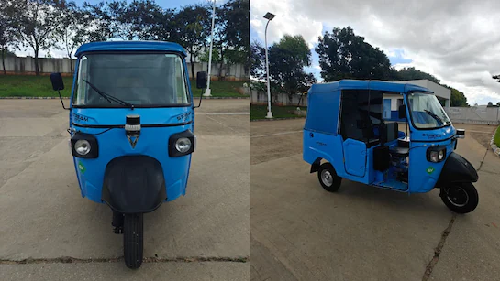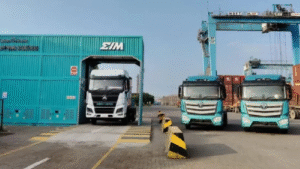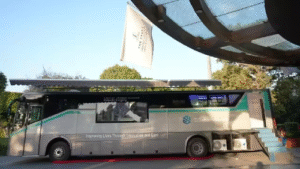India has once again positioned itself at the forefront of the global electric vehicle revolution with the launch of the world’s first commercially available autonomous electric three-wheeler.
Developed by Indian EV manufacturer Omega Seiki Mobility (OSM), the vehicle—christened ‘Swayamgati’—is an AI-powered electric rickshaw designed to operate without a driver. The innovation is set to redefine last-mile connectivity in structured environments across the country.
| Key Features of ‘Swayamgati’ | Details |
| Developer | Omega Seiki Mobility (OSM) |
| Name | Swayamgati |
| Technology | AI-based Autonomy Stack, LiDAR, GPS, Multi-sensor Navigation |
| Range | Up to 120 km on a single charge (10.3 kWh battery) |
| Starting Price | (Passenger variant) |
| Target Zones | Airports, Smart Campuses, Industrial Parks, Gated Communities |
The Swayamgati is built on an indigenously developed electric platform and integrates a sophisticated AI-based autonomy stack. This system uses LiDAR, GPS, and multi-sensor navigation to perceive its environment, detect obstacles within six meters, and navigate pre-mapped routes.
During its pilot phase, the autonomous three-wheeler successfully completed a 3-km route with seven stops entirely without human intervention, showcasing its capability for real-time obstacle detection and passenger safety.
OSM Founder and Chairman, Uday Narang, stated that the launch of Swayamgati is a major step towards making affordable and scalable autonomous mobility a necessity in India. The technology is specifically designed to handle the challenges of crowded, low-speed traffic and varied road surfaces common in the Indian subcontinent.
While the concept of a driverless vehicle on India’s famously congested public roads may seem futuristic, the initial rollout is focused on controlled, semi-structured environments. The autonomous rickshaws are intended to serve as shuttle services within:
- Airports
- Technology and Industrial Parks
- Large Smart City Campuses
- Gated Communities
With an entry price of for the passenger version (and for the upcoming cargo variant), the Swayamgati is positioned as an economically viable, zero-emission solution for shuttle and logistics operations. OSM has set an ambitious target of rolling out 1,500 units over the next two years as it pushes towards the commercial deployment phase.







